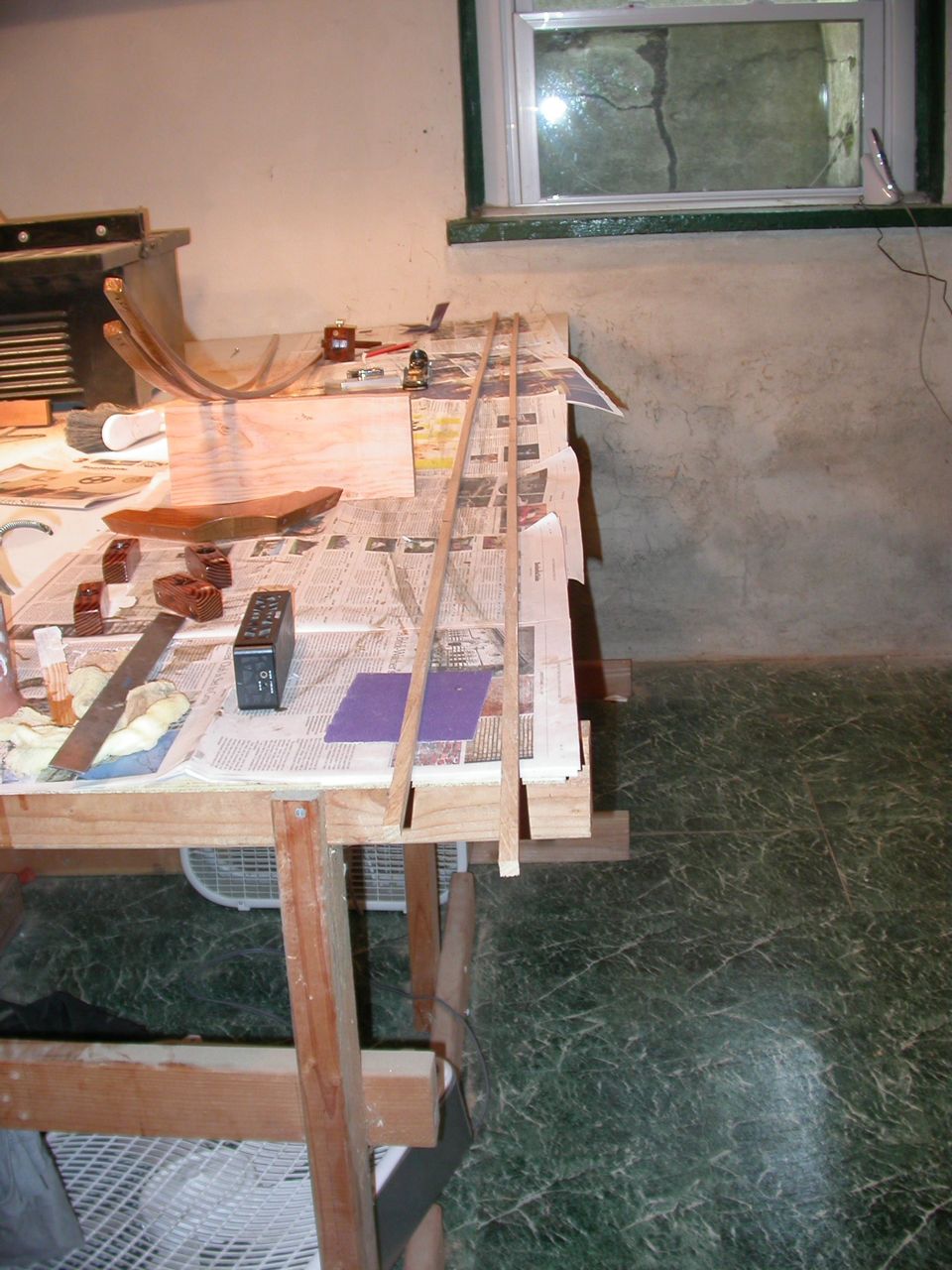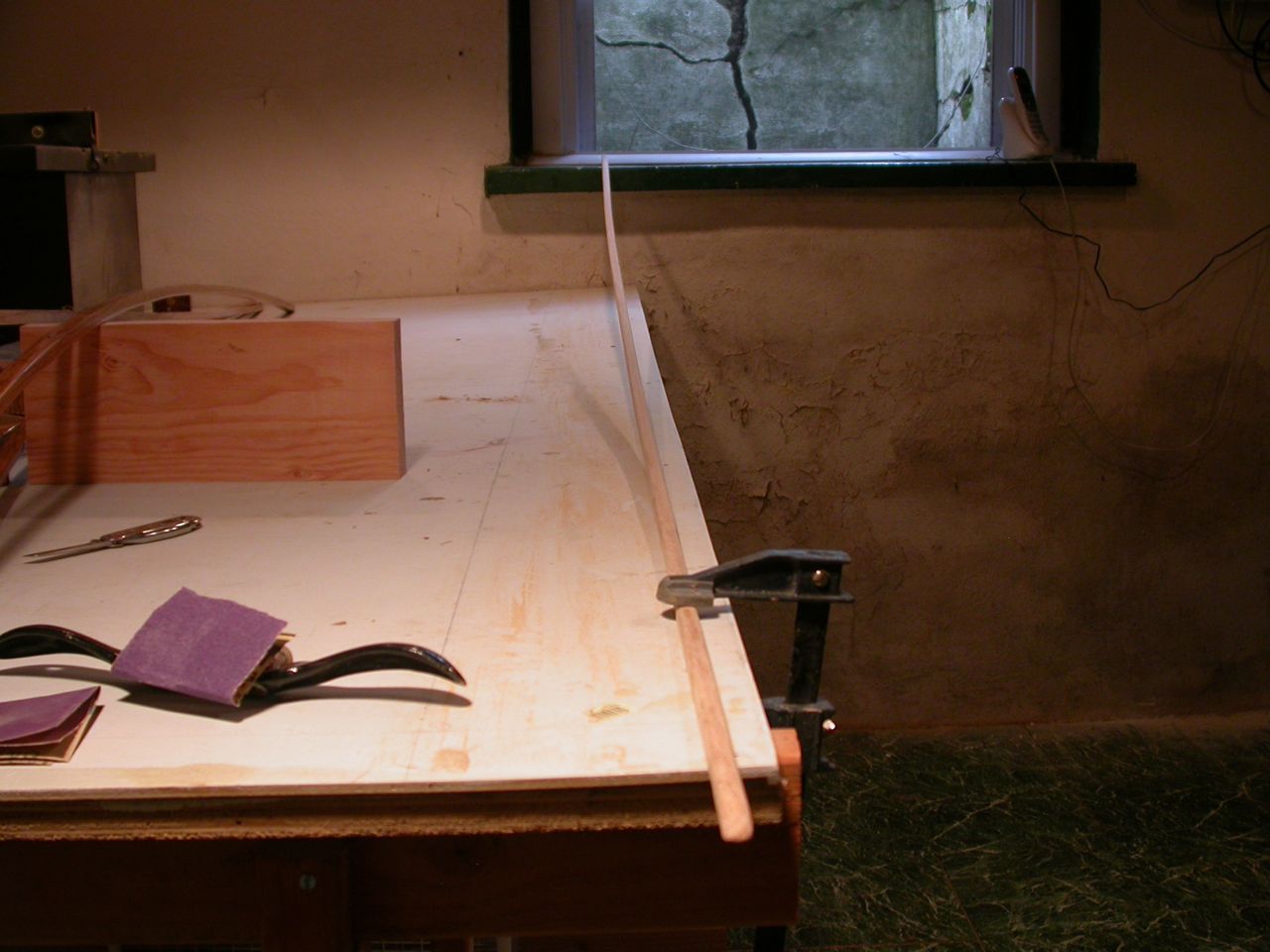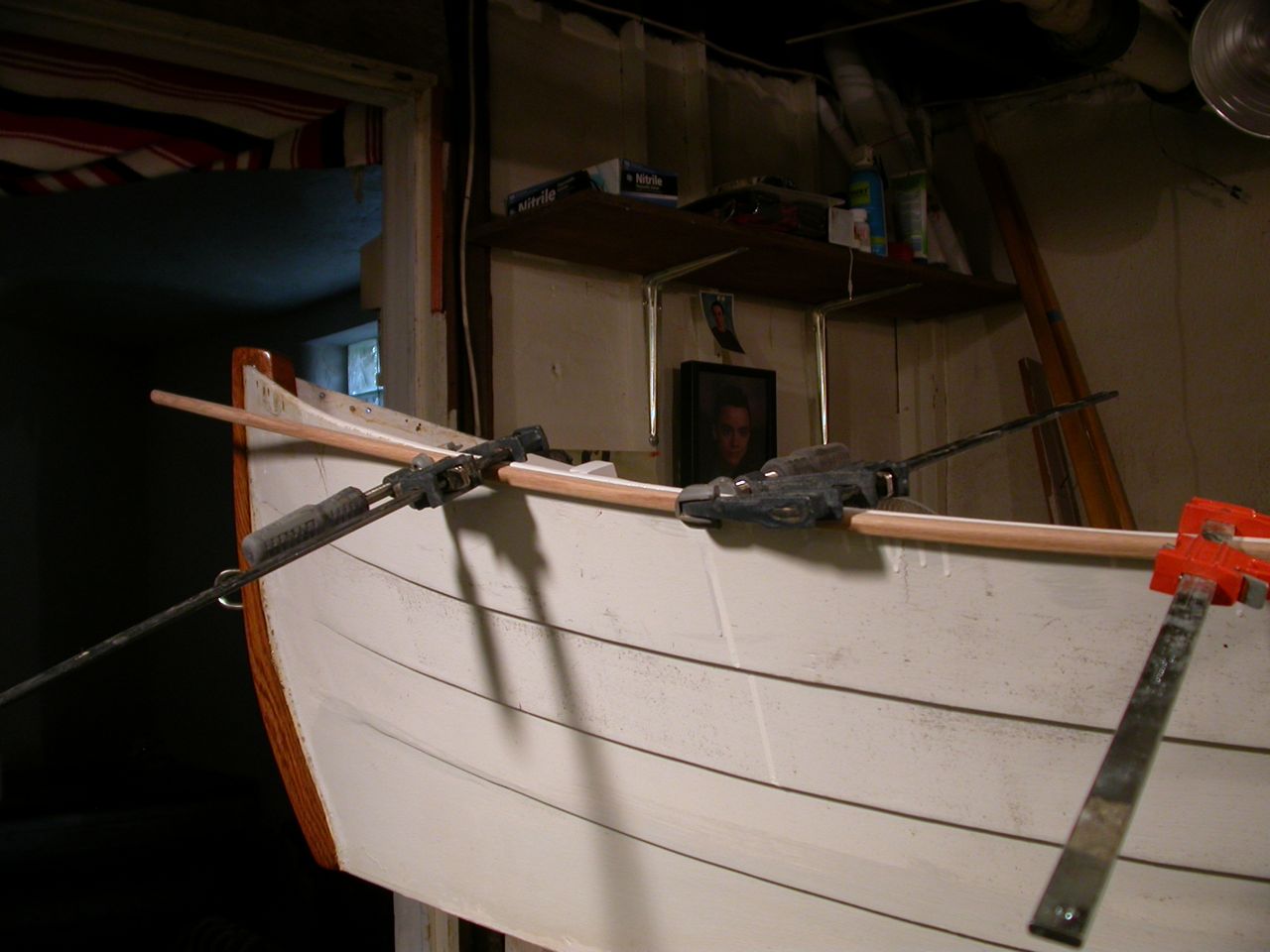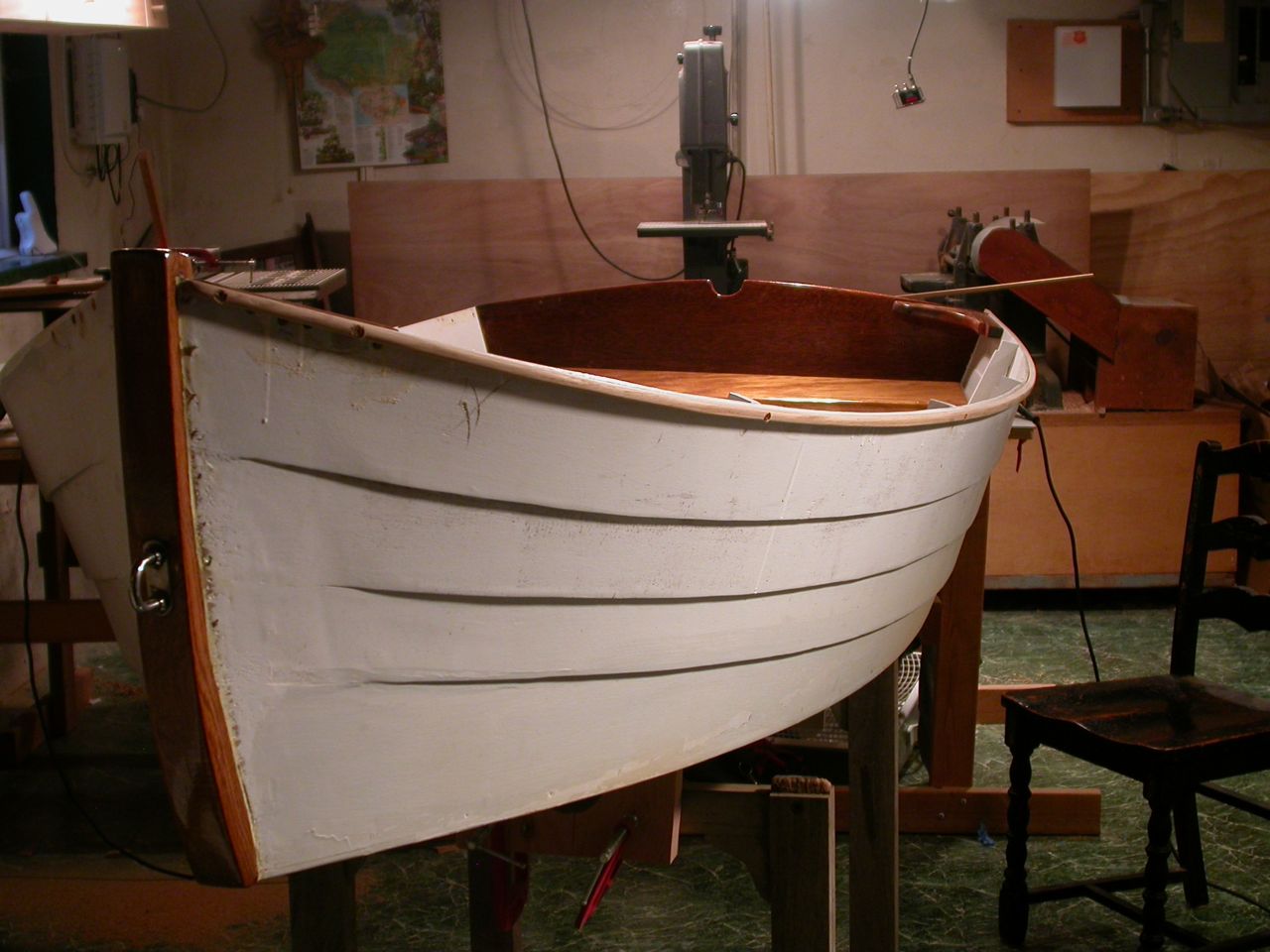This isn't so important in a glued-lapstrake boat, which are plenty stiff to begin with. I rowed Cabin Boy nearly every day all the way up the coast, and was never bothered by any flexing, even on those few unfortunate occasions when I really had to muscle my way to windward. But a little extra stiffness would make rowing that much easier.
So I started looking around for wood to use. I thought I had some half-round red oak molding left over from a home improvement project -- perfect, I thought, for an outwale. But my memory was faulty. The leftovers weren't half-rounds, they were quarter round. Dang.
It has been my goal to complete this refit without buying any wood, but what choice did I have? Nothing in my junk pile looked right. I had a bunch of molding that I'd experimented with as lofting battens, but they were all odd-ball shapes. Nothing that looked like an outwale.
So reluctantly I headed down to my local Big Box store. Much to my surprise, they didn't have any half-round molding either. Not even cheap 'white wood' half-round molding. I stopped at a more upscale wood emporium on the way home, and they had some oak half-rounds, but the prices made my eyes pop. I drove home thinking, there must be a better way.
After mulling this problem over for a day or two, it suddenly occurred to me that I didn't need to buy half-round molding. That was for amateurs! Well, I was still an amateur, but I didn't need to buy any stinkin' half-round molding. I could make it!
You might be thinking, 'well, duh!', but I was thinking 'Wow! What a revelation!'
And, yes, that's why I'm an amateur.
Anyway, I rushed back to my junk pile and after digging a bit, found a 10' long strip of white oak, about 1" by 1/2" in cross section. I figured it was just wide enough for two outwales if I ripped it exactly -- and I mean exactly -- in half.
I set up my table saw and feather board and, before I knew it, I had two strips, pretty much exactly the same size. Unfortunately, I was so excited, I forgot to take 'before' pictures, but here are the two 'after' strips, all ready for shaping:
 |
| The secret of boatbuilding: mill your own wood |
Never again.
I rounded off the end with a spokeshave and sand paper. Then it was ready to try on the boat.
 |
| From square to half-round |
 |
| Lots of clamps needed |
Which proved you can never have enough goop on your shelves, or hardware. (My goop collection has become pretty impressive.)
 |
| Size (of screws) matters |
And here's the first strake screwed on. I never get tired of looking at that John Atkin sheer line. Sheer beauty, even when built by an amateur.
 |
| Not too bad, though! |
So the outwales are being varnished and Cabin Boy is outside in the warm weather, getting three coats of topside paint, and three coats of bottom paint. He should be ready for his grand relaunch some time next week, if King Neptune is willing.
Meanwhile, there are my oars to worry about...
Next Episode: Leathering Oars
John, while you may still call yourself an amateur, you're no longer a rank beginner. In the truest sense of AMATEUR (from the French Amour, or LOVE) you're someone who loves what he is doing and it shows. Thanks for sharing.
ReplyDeleteThat's a very kind interpretation. Thank you.
DeleteHi John, I just discovered your blog and I'm very impressed. I am following your blog and I would like to invite you over to follow me back. I have built a 9 foot cedar strip yacht tender and I'm presently restoring a well neglected 21 foot Glen-L Fancy Free. It will be the subject of my posts, until I launch her, hopefully early this summer :) Your boat building skills are impressive. Your newest follower, Steve
ReplyDeleteHey Steve... that's a beautiful little boat you found. Can't wait to see how she turns out.
DeleteHere's an odd coincidence: My other hobby is cooking, too. I tend towards Mediterranean food these days, but also love real Texas beef jerky, which is something you either need to buy from little road-side stands in Texas or make yourself. You're out-door kitchen (I'd call it a 'restaurant') is amazing.